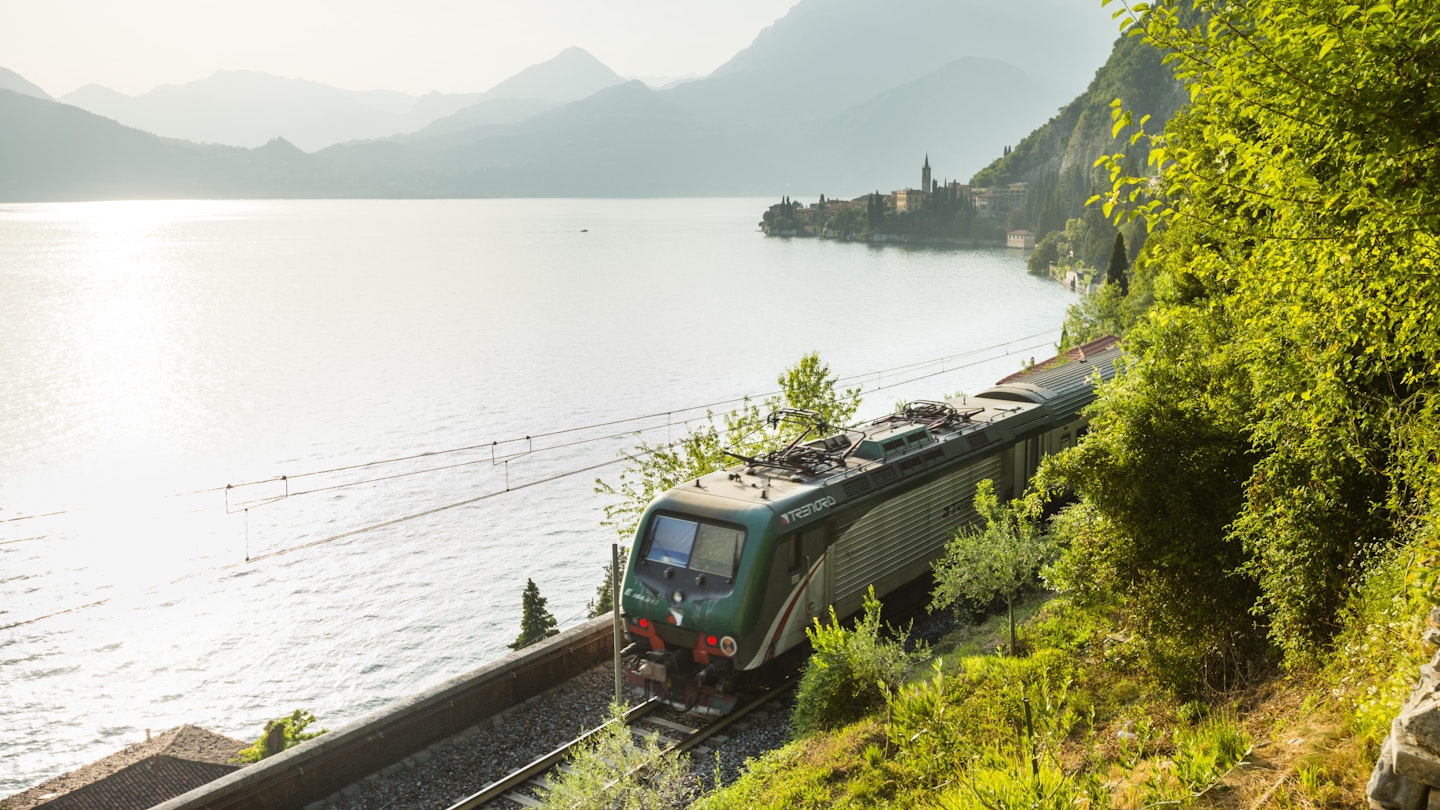Train Travel in Italy with GoTravelDaily
Italy is one of the most rail-friendly countries in the world, with swift, comfortable, and economical trains penetrating almost every corner of the bel paese (beautiful country). Well-known for producing supersonic Ferraris and Lamborghinis, the Italians have also created some of Europe’s fastest trains. The bullet-like Frecce locomotives offer three different categories, led by the high-velocity Frecciarossa 1000, which has a top cruising speed of 300 km/h (186 mph).
For those not in a hurry, one of Italy’s finest pleasures is chugging along a sun-dappled Mediterranean coastline on a medium-paced treno regionale (regional train), watching terraced hillsides, umbrella-lined beaches, and pastel-colored towns float by.
The Italian Rail Network
Popular lore suggests that Mussolini made Italy’s trains run on time. While he modernized the nation’s archaic rail system and built several grand stations, he did not entirely eliminate railway delays. Nowadays, while Italian trains are rarely excessively late, 10- to 20-minute delays are not uncommon (especially on regional trains), which may become an issue when you have a tight connection. Thus, it is always best to choose a direct train to your destination, if possible.
Another challenge for Italian rail travelers is the random one-day scioperi (strikes), part of Italian culture that can bring public transportation to a standstill. Upcoming industrial actions are typically announced several days beforehand.
Most Italian trains are operated by the state-run subsidiary, Trenitalia, which covers over 16,000 km (9940 miles) of rail lines across all 20 of the country’s regions. It is supplemented by a handful of shorter, privately-run railways primarily catering to tourists.

Under Trenitalia, three main train categories exist:
Regionale: the slowest and cheapest trains that generally stop at most stations.
Intercity (IC): faster services that operate between major hubs.
Alta Velocità (AV): includes models like Frecciarossa, Frecciargento, and Frecciabianca which connect major cities at speeds of 300 km/h, 250 km/h, and 200 km/h (186/155/124 mph) respectively.
Private competitor Italo operated by NTV (Nuovo Trasporto Viaggitori) brings a bit of healthy competition, offering two types of trains that provide similar service levels to Trenitalia’s faster offerings.
High-speed Italo trains connect major hubs such as Turin, Milan, Bologna, Florence, Rome, Naples, and Salerno. Frecce trains cover a wider network, stretching further south to Reggio Calabria, while Intercity and regional trains serve the rest of the country, including Sicily and Sardinia.
Tickets and Reservations
Ticket prices vary based on the type of train, class of service, time of travel, and how far in advance you purchase them. The upscale and pricier Frecciarossa trains have four classes with incremental pricing. Italo offers three classes which resemble Trenitalia’s structures.
Tickets on Frecciarossa, Italo, and Intercity services can be purchased up to four months in advance. Reserve tickets in person or online, ensuring you are assigned a specific seat.
Regionale trains do not require reservations; you can simply buy a ticket and board the train, choosing any available seat.
When to Validate Tickets
Tickets for regional trains must be validated at green and grey machines located in stations before boarding. Failure to do so can result in a fine if you’re caught travelling without a validated ticket. On the other hand, AV and Intercity train tickets do not require validation.

Discounts, Passes, and Offers
Trenitalia offers various discount passes, including the Carta Verde and Carta d’Argento for young adults and seniors. However, these passes are primarily beneficial for residents or extended visitors who use them regularly.
For short-term visitors, Eurail and InterRail passes are of greater interest. The InterRail pass allows for travel across multiple European countries, while the Eurail pass is available for non-European residents. Note that reservations for high-speed trains come with additional fees, making separate tickets often more economical.
Train Occupancy and Train Types
Frecce trains, especially the Frecciarossa 1000, provide fast and comfortable travel, making them preferable over driving, particularly during peak hours. Intercity Notte trains offer overnight services across the country, while regionale trains serve smaller towns at budget-friendly rates.
While trains can become busy, especially during summer vacations, they frequently operate, minimizing any travel congestion worries.

Connectivity and Comparisons
Italian train stations in large cities are typically located within a short distance of the city center. For convenience, cost, and sustainability, trains often surpass cars, serving some of Italy’s most remote communities.
Many Italian airports are directly accessible via train lines, making it easy for travelers to transition from flights to trains.
Service Features
Italian trains primarily use vending machines for snacks, with Frecciarossa providing a staffed café. Most trains, including regionales, have charging points for devices and spacious toilets. There are no luggage charges, and assembled bikes can be carried on regionale and Intercity trains for a small fee.
Best Routes and Travel Tips
For Italy’s most scenic rail trips, consider taking small private lines or regional routes. Here are five of the best journeys to explore:
- The epic Vigezzina line offers stunning alpine views and crosses 83 bridges.
- Sardinia’s Trenino Verde runs through remote landscapes on narrow-gauge tracks during summer.
- The Ferrovia Circumetnea in Sicily surrounds Mt. Etna and showcases lemon groves and lava flows.
- Take any Trenitalia regionale train along the Levante Riviera for beautiful coastal scenery.
- The Circumvesuviana line transports visitors between Naples and Sorrento, revealing picturesque views of Mt. Vesuvius.
Accessibility
All AV trains are equipped with accessible facilities, including designated wheelchair seats and large accessible toilets. Various Italian stations offer free assistance through designated help offices.
Arriving in Italy by Train
Some of the finest train journeys in Italy include international routes linking to neighboring countries. Trains like the Venice Simplon Orient-Express are known for their luxurious experiences, while Frecciarossa facilitates rapid routes to destinations like Paris and Milan.





